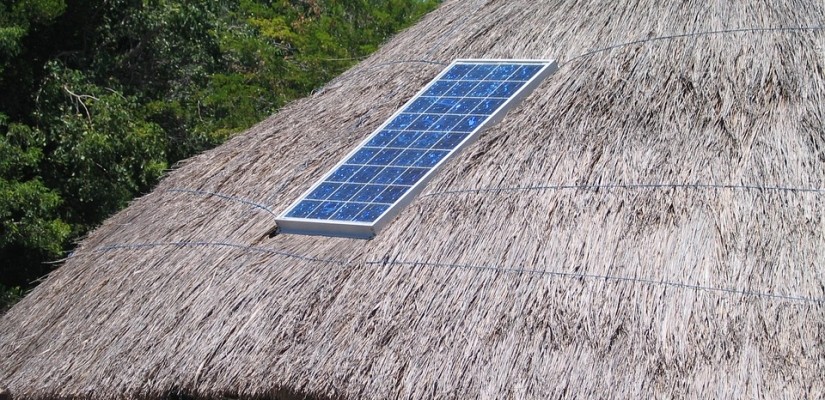Africa’s economic growth is projected to accelerate going into 2020, and increased demand for energy has also attracted more investment. As Africa is one of the least urbanized regions of the world, sustainable energy development contributes to poverty alleviation and better infrastructure. According to the African Development Bank, economic growth is expected to reach 4.1% by 2020, which has also led to more opportunities for renewable energy investment. One 2017 EIA statistic states that sub-Saharan Africa experiences one of the highest rates of energy poverty in the world, with an estimated 600 million people living without electricity; USD 27 billion in investment would be required every year until 2030 in order to reach universal electricity access. Furthermore, 87% of the people in Africa without access to electricity live in rural areas with poor infrastructure. Due to population growth, more people live without access to electricity now than in almost 30 years. Despite these seemingly daunting challenges, the continent contains an abundance of utilizable renewable energy sources such as solar, hydro, and wind power. Investment in energy, especially renewable energy, comes from a wide variety of sources including government spending and public-private partnerships. Sub-Saharan Africa is home to some of the world’s most important emerging economies. This provides a space for increased sustainable development, and renewable energy can play an important part in constructing infrastructure, bridging the urban-rural divide, improving overall quality of life, and addressing climate change. Renewable energy is not only a source of economic gain for the region, but is also an important part of its environmental health. The African Development Bank reports that although Africa does not contribute as much to carbon emissions as other regions, it will be disproportionately affected by warming temperatures, with estimates saying it may need to bear 50% of the global cost to adapt to climate change.
Africa is home to an abundance of renewable energy, especially solar power, and has the highest amount of sunlight compared to any other continent in the world. Between 2009 and 2016, solar power capacity went from 100 megawatts to over 2 gigawatts, a 2000% increase. By 2022, renewable energy should comprise 12% of Sub-Saharan Africa’s energy mix. Microgrids using solar energy are often used to deliver electricity to rural areas without access to the main public grid. One example of a country that is turning to alternative renewable energy sources is South Africa, which gets more than 2,500 hours of sunshine a year. As South Africa’s state-owned utilities giant Eskom currently experiences financial woes, corruption charges, and crumbling energy infrastructure, South African communities face regular power outages. One company called the SOLA Group will use its own PV equipment to generate 40 megawatts of electricity that may rival Eskom in some areas. Nigeria has also looked to solar energy as a means of increasing access to electricity and improving power generation capacity as its population increases rapidly. The country has invested over $20 billion in solar power alone, and hopes to get 30% of its energy mix from renewable sources by 2030. Furthermore, this could help Nigeria’s domestic economy move beyond its historical reliance on oil and gas. At the same time, Nigeria’s weak rule of law, entrenched government corruption, and security risks may severely hamper this transition.

Hydropower is another popular source of energy in the continent with Mozambique, Namibia, Ethiopia, Malawi, and Zambia receiving 90% of their electricity coming from hydropower. However, water flow generated power also comes with certain risks. While the Grand Ethiopian Renaissance Dam (GERD) will be the biggest plant using hydropower in Africa, generating some 6 GW of electricity when completed, there are a wide variety of potentially damaging effects on the environment and water supply to neighboring countries such as Egypt. The USD 13 billion Inga 3 dam project in the Democratic Republic of Congo (DRC) has the potential to displace tens of thousands of people living around the Congo River. At the same time, the Inga 3 dam could address the regular power outages that plague communities in the capital city of Kinshasa.
While wind energy is less popular as a source of renewable energy in Africa, lagging behind solar and hydro, there are still initiatives in certain regions that will see an increase in the use of wind-generated energy. Eastern Africa has the greatest capacity to generate wind-based power, with the potential to generate 30,860 TWh at a capacity factor of 30%, which if effectively utilized would be more than enough to power the entire continent as of 2012 more than 50 times over. Kenya in particular has taken the initiative by establishing the Lake Turkana Wind Power (LTWP) project, the largest wind farm in Africa. The country also has ambitious plans to be completely powered by green energy by 2020. However, government corruption and currently weak energy infrastructure may impede its goals.
Overall, countries around the continent of Africa are developing sustainable ways to address electricity outages and energy infrastructure gaps throughout the region. From solar energy-powered microgrids to large-scale wind farms, governments and communities are taking advantage of their countries’ rich resources to tackle long-term issues. Region-wide initiatives such as the Desert to Power Initiative backed by the African Development Bank would give 250 million people in the Sahel region solar-powered electricity and provide an opportunity for cooperation between different countries. The U.S. government-backed Power Africa project started in 2013 has also helped a wide variety of communities across Sub-Saharan Africa with their electricity needs, 75% of which comes from renewable energy. While certain risks such as rising government debt, corruption, and poor infrastructure could hinder the development of renewable energy infrastructure, Africa’s economic growth is providing more and more opportunities for sustainable solutions in the face of global climate change.
